Basf Chrome Tape Formulations:
The information below has been compiled by kirunavaara.
We are aware that there were internal names like CP II for some of the tapes, and that the pancakes available for the duplication industry and for third-party companies who wound BASF tape into whatever cassette shell were sold under the internal names. As most of us probably are more used to BASF cassettes as they were available in shops, We use the consumer market names below.
Many of the cassettes were available in slight variations of package design, or in different cassette shells. In these cases, I have chosen the link to one of the most common versions as a representative for the respective line-up.
Basic categories of BASF true chrome tapes for compact cassettes:
1. Chromdioxid SM 1971-80 are singe layer true chromes, with magnetic properties according to DIN reference tape C401R.
| 1971-74 | 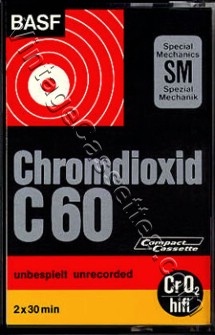 |
| 1974-76 | 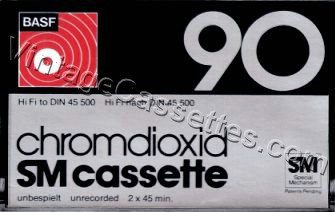 |
| 1976-77 | 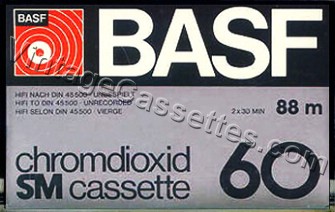 |
| 1977-80 | 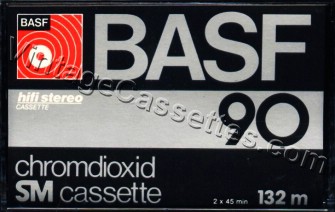 |
2. Chromdioxid super SM 1977-80 are double layer true chromes with off-standard magnetic properties, still close to C401R, but higher sensitivity and a non-linear frequency range on DIN-aligned recorders:
| 1977-80 | 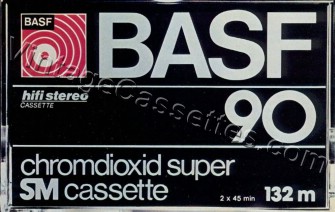 |
(77-79 without "hifi stereo cassette" badge, 79-80 with "hifi stereo cassette")
3. Chromdioxid II SM and Cr Extra II 1980-ca 1993 were single layer true chromes, with magnetic properties according to IEC II reference tape S4592A.
| 1980-82 | 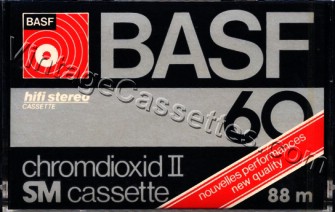 |
| 1982-85 | 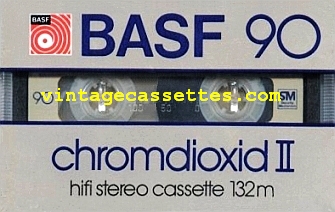 |
| 1985-87 | 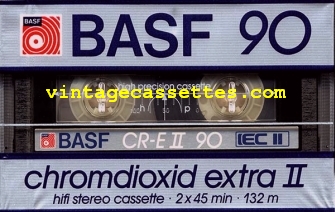 |
| 1987-89 | 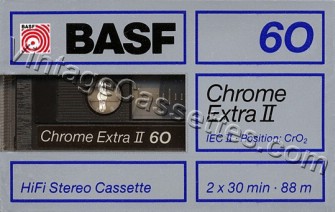 |
| 1989-91 | 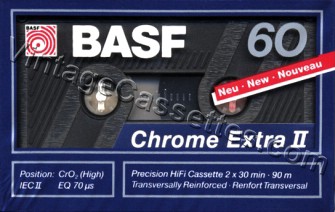 |
| 1991-93 | 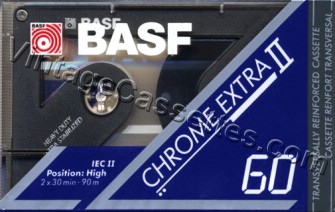 |
| 1993-95 | 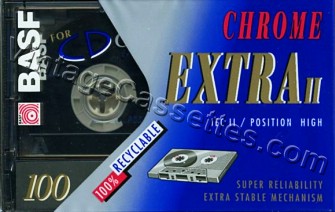 |
4. Cr Super II 1980-ca 1995, as well as Cr Maxima II 1982-ca 1994/95 are double layer true chromes with off-standard magnetic properties, still close to S4592A, but higher sensitivity and a non-linear frequency range on IEC-aligned recorders:
Cr Super:
| 1980-81 | 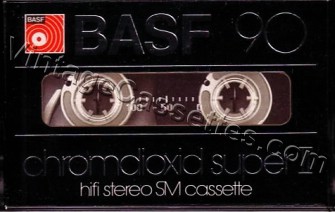 |
| 1981-82 | 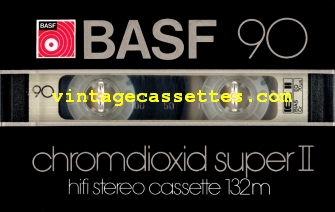 |
| 1982-84 | 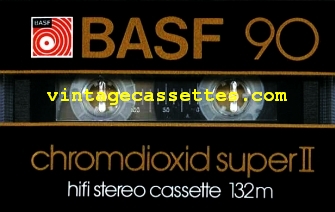 |
| 1984-85 | 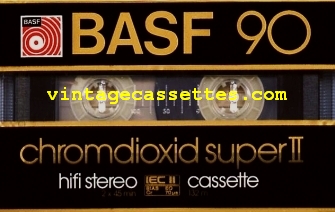 |
| 1985-87 | 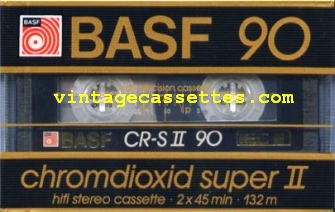 |
| 1987-89 | 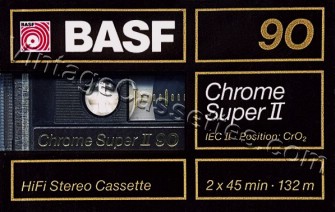 |
| 1989-91 | 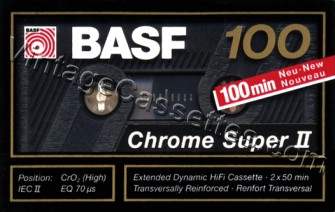 |
| 1991-93 | 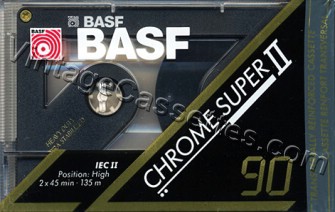 |
| 1993-95 | 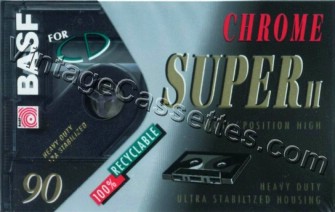 |
Cr Maxima:
| 1982-85 | 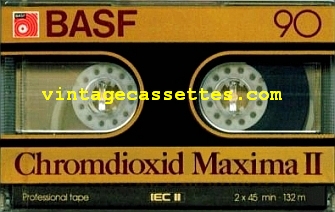 |
| 1985-87 | 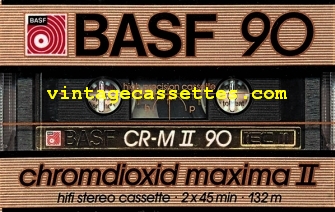 |
| 1987-88 | 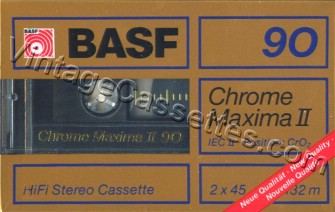 |
| 1988-91 | 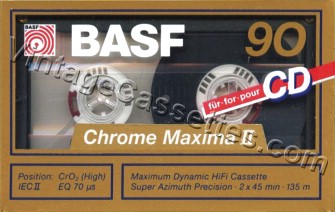 |
| 1991-93 | 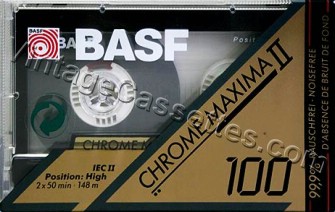 |
| 1993-95 | 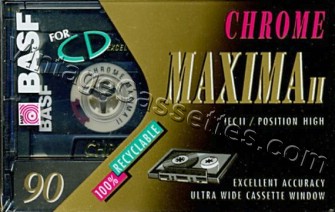 |
The last examples of the 1993-95 line-up had already the next generation of tape described below.
5. CE II 1995 until the end: "single-layer chrome/ferric cobalt mix (85%/15%)" (quoted from Wilhelm) with higher sensitivity compared to the older models, magnetical properties close to IEC II reference tape U564W
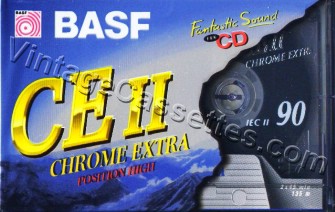 |
6. CS II and CM II 1995 until the end (plus some 1994 Chrome Maxima II): Double layer tape, the lower layer being the same mixture of ferric cobalt and chrome as in the CE II, and the upper layer pure chrome. Frequency response nearly as flat as a single layer tape, magnetical properties close to IEC II reference tape U564W
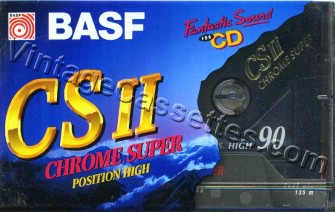 |
|
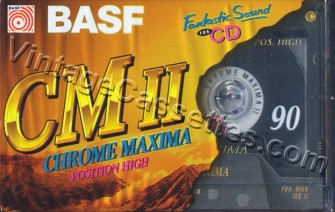 |
With the last series of CS II during the Emtec era, we are not sure what tape they used.
All four Maxima Design Editions had the contemporary Chrome Maxima tape.
All budget chrome cassettes with different names, such as Chrome Standard II, ReCorD II, Sound (Level) II, the 353 Cr II Live as well as the Disney series and other printed shell promotional cassettes had one of the single layer chrome tapes, either the old Chrome Extra II or the new CE II formulation.
The Chrome II Super _Quality_ was specially made for Lidl discounter stores, and despite having the "Super" shell, I am not sure whether they had single layer CE II or double layer CS II tape inside:
| 1995-97 | 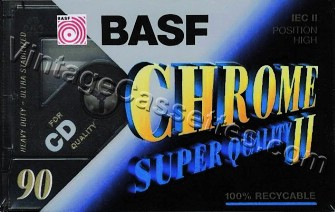 |
| 1997-2002 | 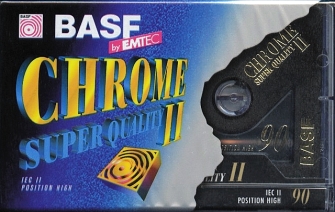 |
BASF's cassette with cobalt doped ferrics for type II:
1. Reference Super II made from 1987-88, very close to the 1987 revision of the IEC II referene tape, U564W:
| 1987-88 | 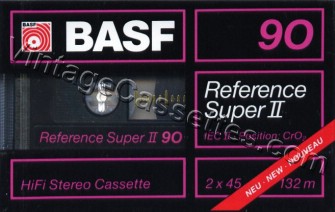 |
2. Reference Maxima TP II, during the first years with a single layer coating sourced from Hitachi/Maxell, the same "Black Magnetite" they used for the XL II-S:
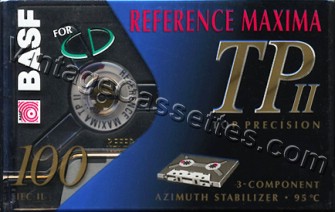 |
3. TP II from 1995 until the end: BASF's own cobalt doped ferric tape, not sure if it was a single or double layer formula:
| 1995- | 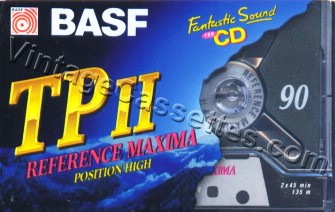 |
3. 353 series Cr II Focus and Cr II Studio from ca 1993-94: Single layer cobalt doped ferrics. Not sure who made the tape. The shells were from General Magnetics, the tape could possibly be General Magnetics, too, or Maxell (XL II). Can anybody help with these?
| 1993-94 | 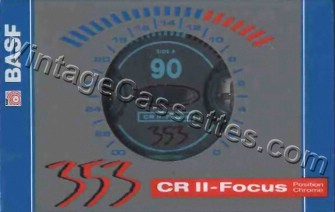 |
| 1993-94 | 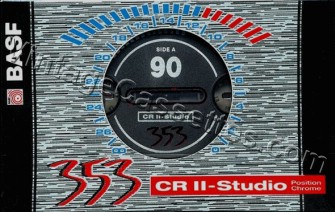 |
For the Japanese and US line-ups, we are not really sure if the following is correct:
US models chromium dioxide, Studio II, and early Professional II had the same single layer tape as the European 1971-80 models (DIN standard):
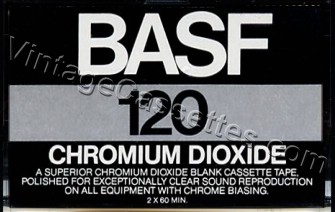 |
|
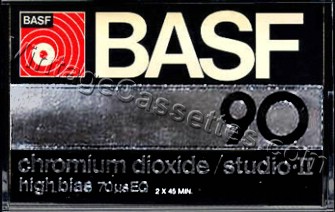 |
|
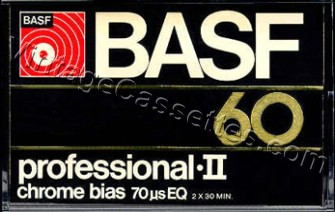 |
The US Professional II model below in new design was a double layer formulation close to the old DIN reference tape C401R, which was also used in the German model chromdioxid super.
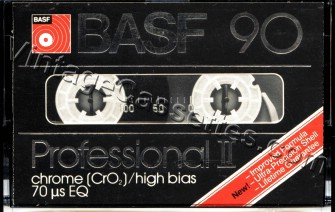 |
The follow-up US model was a single later formulation which was quite sucessful as it was quieter, did not have mid-range dip in sensitivity and it offered ruler flat response in Japanese recorders.
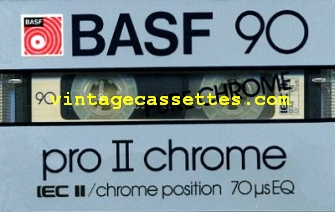 |
Japanese model SCR was the same double layer tape as German chromdioxid super (first generation):
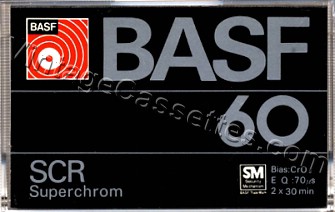 |
Japanese model CRX was the same single layer tape as chromdioxid II (IEC II standard):
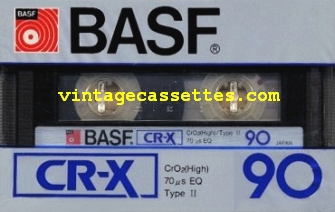 |
Japanese model PRO II was the same double layer tape as German chromdioxid super II (second generation):
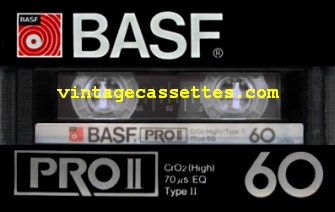 |

